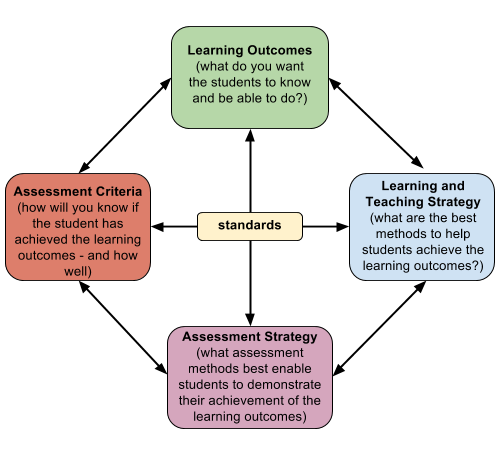Assessment criteria communicate what students are expected to do in a learning task. They are the factors instructors use to evaluate the students' performance and their achievement of the learning outcomes.
Benefits to students
When instructors share assessment criteria before an assignment or activity, students improve their performance.
Seeing the assessment criteria in advance helps students:
- recognize what is important and valued in the curriculum
- focus their efforts on learning outcomes
- evaluate their own performance through self-assessment and reflection
- build confidence in their learning
Benefits to instructors
Assessing students can be challenging. Using assessment criteria helps instructors:
- take the “guess-work” out of grading
- evaluate work more consistently and objectively
- explain how marks have been awarded
Examples of assessment criteria
Here are examples of assessment criteria:
- Create a design brief that incorporates design process and principles.
- Analyze distributions using probability and data analysis techniques.
- Use tools and models to integrate quantitative and qualitative information in problem-based analysis using relevant tools and models.
- Adopt a variety of roles on a consulting team task force.
- Justify management's actions in selecting specific recommendations among alternative possibilities.
Relationship between assessment criteria and program of study
Before you start to write assessment criteria, consider how they relate to the design of your course.
The diagram below illustrates a cyclical relationship between assessment criteria and program of study. It shows how assessment criteria inform learning outcomes, and how assessment criteria are informed by learning outcomes:
